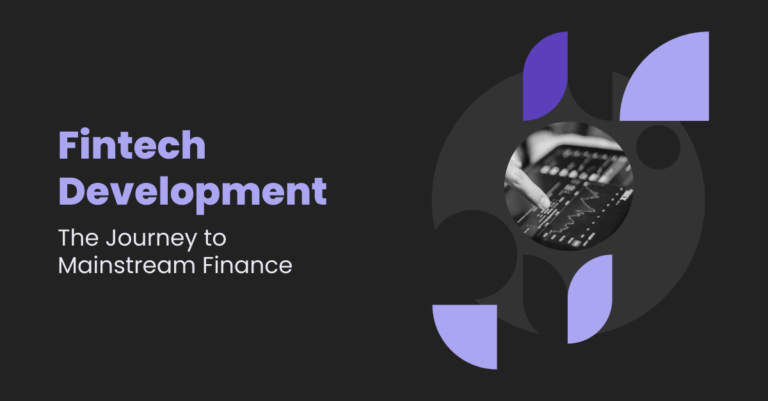Choosing the right strategy among different software development methodologies is crucial. This is because the approach to software development determines the success of a project. Plus, it is difficult to achieve stability in product operation and security without them. Such methodologies also enable a project to provide better estimates, deliver stable systems, and keep customers informed.
So, what are the software development methodologies that are used the most today? Learn about these methods in this article and find out how Develux compares some of the most popular software development methodologies.
Process of Custom Software Development
The custom software development process refers to the procedures followed to take a project from planning to execution. It is better explained by the software development life cycle (SDLC), which includes the following stages: planning, analysis, design, implementation, testing and integration, and maintenance.
To perform these steps, there are different software development methodologies used as per the requirements and nature of the project and/or team developing it. Choosing the right method can be a major reason for the success of software development. You can either utilize these methods yourself or consult custom software development services to streamline the process for you.
Let’s explore in detail some of the most commonly used and well-performing software development models in the industry.
Agile Methodology
As one of the most popular custom software development strategies, agile software development methodology manages a project by breaking it up into several phases, which are called sprints. This methodology works by developing software in iterations, with each iteration consisting of a small increment of the new functionality. Two of the most well-known agile software development types are feature-driven development (FDD) and extreme programming (XP).
The incremental changes in agile methodology mean that teams can minimize risks like bugs, cost overruns, and changing requirements by delivering small changes in each iteration. This also allows teams to detect bugs early on, align expectations accordingly, and work in a highly flexible manner. Furthermore, Users can also get to learn the software benefits soon with incremental improvements.
This methodology, however, is not without drawbacks, the prime one of which is how pressure-inducing it is. Developers are required to dedicatedly commit time because each feature has to be completed within a certain iteration so that it can be approved timely.
Waterfall Methodology
The waterfall software development method is considered the oldest and most traditional software development methodology. It is essentially a linear model consisting of sequential stages. These stages have distinct goals and objectives, and each stage has to be fully completed before moving on to the next stage. Also, with this software development strategy, there is usually no way to go back to a stage to make any modifications. The stages included in this methodology are requirements, design, implementation, verification, and maintenance.
Let’s now consider waterfall methodology advantages and disadvantages. Not only is the waterfall model very easy to understand and simple to employ, but it is also suitable for almost all types of projects. However, the rigid structure of the waterfall model means it is slow in its execution and often ends up being quite costly due to all the strict guidelines and tight controls involved in it.
Scrum Methodology
The scrum software development methodology is among the trendiest and most well-known of the development strategies. This method suggests that software projects progress via a series of sprints. Sprints are generally time-bound with a maximum time of a month and most commonly two weeks. This method also recommends sprint planning, a planning meeting at the start of every sprint where team members decide how many items they can commit to – all of which go into the sprint backlog. Moreover, on each day of a sprint, team members are to attend a daily scrum meeting, which is usually time-bound by 15 minutes at the maximum.
This custom software development process stands out because it is empirical and can efficiently be applied to any rapidly changing or high-priority emerging needs. Additionally, this methodology ensures that the team has a key role in decision-making related to a project, along with enhancing the measurement of individual resource productivity.
Big Bang Methodology
The big bang methodology is usually employed in small projects where the client is uncertain as to the exact requirements or how the project is expected to turn out once deployed. As such, this method does not involve any sophisticated tools, rigid structures, or formal processes. Therefore, no pre-planning is required for using this methodology.
Some of the most prominent benefits of using this technique of software development include the ease of use of this model. It is very straightforward to use with no planning necessary. It requires minimal resources and is extremely easy to use at every stage of a project. Since it offers great flexibility when developing, this can be used by beginner developers as well as students.
The main drawback of this method is that it is not very applicable on large projects, which cannot be worked upon without proper planning.
Spiral Model of Software Development
Another one of the most well-known software implementation methodologies is that of the spiral model of software development. This method is named so because, like a spiral, it starts from the smaller aspects of a project and then moves onto the larger ones. There are four main parts of this methodology: planning, evaluation, engineering, and risk analysis. The risks are managed at every stage, and the spiral movement of the project ensures the elimination of risks and regular feedback.
This methodology has several advantages over other common software development methods. For instance, it easily accommodates changing requirements in the project since there is a highly disciplined development procedure. Furthermore, cost estimation of a project and its parts is very straightforward. Moreover, not only does this methodology help with risk analysis, but it eliminates the risks at an early stage, saving resources, time, and money. That being said, this methodology works best for large-size and critical projects.
Feature-Driven Model of Software Development
A feature-driven model is among the forms of scrum software development methodologies. This is an iterative and incremental approach to custom software development. Like the waterfall methodology of software development, this method is also regarded as old and traditional. This client-centric approach to development focuses on delivering working software regularly. The term ‘feature’ in the name of this methodology comes from the main component of feature-driven development. The term refers to client-valued parts of the work that need to be delivered every two weeks. If any feature is expected to take longer, it has to be divided into smaller parts.
To keep producing working software every two weeks, feature-driven development uses five main steps:
- Development of an overall model;
- Building a feature list;
- Preparing a plan for each feature;
- Building a functional design of the feature;
- The feature build itself.
Dynamic Systems Development Methodology
If you are on a limited budget and have a strict time frame to develop the software, a very suitable custom software development process is the dynamic systems development methodology. It is often used in projects with high user involvement. This model relies heavily on feedback flowing in the system in order to maximize the functionality of the software. This methodology is preferred for how goal-oriented, light, and flexible it is, along with its focus on continuous development. The dynamic systems method, furthermore, empowers teams to make their own decisions.
Since this model is based on agile software development principles, it also breaks down a project into interactions and delivers each piece timely and with a unique approach. This methodology, however, is not just an iterative approach to software development but also brings additional structure and discipline to the process.
Software Development Methodologies Comparison
Agile vs. Waterfall
Both the agile and waterfall software development methodologies are among the most successful and widely used development processes today. Agile is an iterative process that focuses on cyclic development and collaboration. The waterfall model is a sequential process where tasks are handled in a linear manner. The comparison of software development methodologies does not lie in a sense where one is more useful. It stems from the different kinds of projects and requirements where one methodology usually outperforms the other.
The waterfall methodology is better suited for smaller projects where the requirements are very clear and well-defined. This is also an easily adaptable method for shifting teams. Use this process when the project demands following strict procedures and a defined set of guidelines. This process is not suitable in cases where changes have to be made later on because it is very difficult to move back to a phase to alter the product.
Agile development is usually more appropriate for projects where the client involvement is high and multiple changes have to be incorporated in incremental stages. This is because testing is done concurrently, and changes can be made at any stage. Use this method when the project allows flexibility. This process is not suitable for smaller projects.
Scrum vs. Spiral
Scrum and spiral are two other highly useful software development methodologies that companies rely upon heavily today. Scrum software development plans for one interaction and begins its execution. At any certain point, the focus is on a single iteration and not the entire project. The plan is reviewed daily, and any required adjustments to the iteration are made. Spiral software development, on the other hand, is the kind of app development where planning is done one time, but the execution is divided into multiple parts.
The spiral model of software development is preferred when the project is large with frequent releases. It is also useful in cases where the creation of a prototype is applicable. Furthermore, employ this methodology in a project where requirements are unclear, and changes may be required anytime. Scrum, similarly, can also be used when requirements are not clearly defined and many changes are expected. Besides this, scrum is vital for projects that require extensive and regular testing. Due to the high reliance on team members and their decision-making in this methodology, choose scrum only when the product owner is fully available and the team has self-management skills.
















